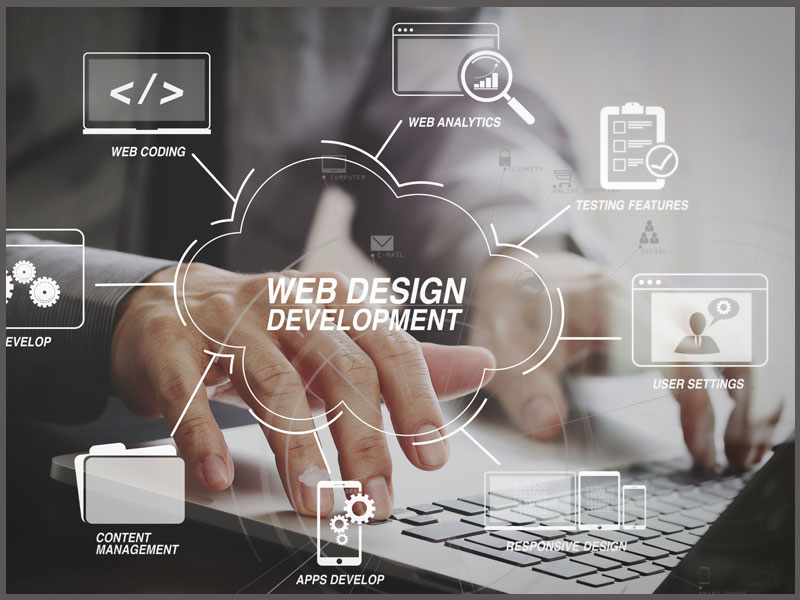Aligned Position Web Design: Expert Web Design Strategies for Achieving Business Goals Online
Aligned Position Web Design: Expert Web Design Strategies for Achieving Business Goals Online
Blog Article
The Best Sorts Of Web Design to Enhance Customer Experience and Engagement
In the ever-evolving landscape of electronic interaction, the performance of Web design substantially influences user experience and involvement. Various style strategies, such as minimalist, receptive, and interactive formats, each offer special advantages that can provide to diverse customer demands.
Minimal Website Design
As electronic landscapes come to be significantly messy, minimal Web style has become a powerful technique to enhancing user experience. This layout philosophy prioritizes simpleness, concentrating on important aspects while removing unneeded disturbances. By making use of sufficient white area, simple navigating, and a minimal color palette, minimal style fosters clarity and routes individual focus to vital content.
The core concept of minimalist Web layout is to create a smooth interaction for customers. By lowering cognitive tons, individuals can promptly grasp information without feeling overwhelmed. This straight strategy not just improves usability yet likewise urges engagement, as visitors are more probable to discover a website that is easy and visually attractive to navigate.
In addition, minimalist style frequently stresses typography and imagery, making use of these components tactically to share messages successfully. This emphasis on crucial parts can enhance brand name identification and develop an unforgettable individual experience. Essentially, minimal website design is not just a fad; it is a thoughtful method that identifies the significance of user-centered style. By removing extraneous aspects, developers can create a much more interesting, effective, and satisfying Web experience for all users.
Responsive Web Design
In today's diverse digital atmosphere, responsive website design has actually become crucial for developing a smooth individual experience throughout a wide range of devices. As users gain access to sites on smartphones, laptop computers, desktop computers, and tablets, the capability of an internet site to adjust its layout and content to various display sizes and resolutions is crucial.
Receptive Web layout utilizes adaptable grids, images, and CSS media queries to make certain that Web content is presented efficiently, no matter the tool used. This method not only boosts the visual appeal of a site yet additionally dramatically boosts use. Customers are most likely to involve with a site that supplies a regular experience, as it eliminates the aggravation of needing to focus or scroll exceedingly.
By taking on responsive layout, companies can enhance their exposure and get to a more comprehensive audience. In summary, responsive Web design is a basic technique that enhances user experience, interaction, and total satisfaction.
Interactive Website Design
Receptive Web design lays the foundation for boosting user experience, however interactive website design takes this a step further by engaging individuals in an extra dynamic method - Aligned Position Web Design. By including elements such as animations, clickable prototypes, and real-time comments, interactive Web design mesmerizes customers, attracting them right into a richer surfing experience
This approach not just fosters interaction yet additionally urges users to discover content actively rather than passively eating it. Techniques such as gamification, where customers gain incentives for completing jobs, can considerably enhance the moment invested in a site and improve total satisfaction. Interactive functions can simplify intricate information, making it extra digestible and delightful.

Incorporating interactive design aspects can additionally lead to greater conversion prices, as individuals are more probable to involve with a site that proactively includes them. Aligned Position Web Design. Eventually, interactive Web style transforms user experiences into memorable journeys, making certain that visitors return time and again
Flat Layout
Characterized by its minimalistic method, flat style highlights simplicity and functionality, stripping away unneeded elements and concentrating on essential attributes. This design viewpoint focuses on use, making sure that users can navigate user interfaces easily and efficiency. By utilizing a clean visual, flat style eliminates the clutter commonly discovered in extra ornate designs, thus improving individual concentrate on material and capability.
The trademark of level style depends on its use vibrant shades, easy typography, and geometric forms. These aspects add to a visually attractive user interface that is both approachable and contemporary. Additionally, flat design cultivates a sense of clearness, permitting customers to discern important activities and details without interruption.
Moreover, flat design is specifically efficient in receptive Web layout, as its simplicity converts well across numerous devices and display sizes. By focusing on crucial functions, level design not only satisfies customer needs yet additionally urges seamless communication, making it a vital component of effective Web layout techniques.
Flexible Website Design
Adaptive Web style tailors the customer experience by developing numerous repaired formats tailored to various display dimensions and devices. Unlike responsive design, which fluidly readjusts a solitary layout, flexible style utilizes distinctive designs for specific breakpoints, guaranteeing ideal discussion on various platforms. This method allows designers to concentrate on the one-of-a-kind characteristics of each gadget, boosting usability by providing exactly what customers require based upon their context.
One of the primary the original source advantages of flexible website design is its ability to enhance tons times and efficiency. By offering tailored content and photos that fit the customer's gadget, web sites can lessen data use and boost loading rates. This is particularly beneficial for customers with slower connections or limited information strategies.

Additionally, adaptive design facilitates a more regular and controlled branding experience. Given that designers create multiple designs, they can guarantee that the aesthetic aspects align with the brand's identity across different Get the facts systems - Aligned Position Web Design. This results in a cohesive user experience, enhancing interaction and promoting individual retention
Conclusion
Minimalist layout cultivates clarity and focus, while responsive design makes certain adaptability throughout numerous gadgets, advertising availability. Collectively, these layout approaches contribute to the production of straightforward environments that not only enhance contentment but also drive higher conversion prices, underscoring their crucial importance in modern Web layout techniques.

Minimal style promotes clearness and focus, while responsive style makes sure adaptability throughout numerous tools, advertising access. Collectively, these layout comes close to add to the development of easy to use settings that not just improve fulfillment yet additionally drive greater conversion rates, highlighting their crucial value in modern Check Out Your URL Web layout techniques.
Report this page